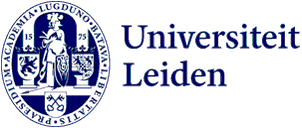
How ‘sleeping’ microorganisms can determine the fate of a population
Microorganisms that temporarily ‘go to sleep’ play an important role in the evolution and survival of a population. Mathematician Shubhamoy Nandan conducted research on the effect of this characteristic called ‘dormancy’ in a novel mathematical model.

Some microorganisms go into a dormant state when they face a hostile or stressful environment. Think of it as a deep sleep or hibernation. It can happen during extremely cold conditions or when they are exposed to chemical pollution, serving as a survival strategy. Plant populations also exhibit dormancy at times: seeds can get buried deep in the soil as a result of environmental conditions and ‘wake up’ generations later.
Shubhamoy Nandan, who finished his PhD in May 2023, constructed a mathematical model that describes this characteristic called ‘dormancy’. It's a topic where mathematics meets biology.
Which genetic type will survive in the long term?
Looking at populations of microorganisms in a multi-colony setting, Nandan computed how they evolve, factoring in their dormant state. His model also looks at how the organisms reproduce and migrate between different colonies. But the inclusion of ‘dormancy’, in the context of finite populations, makes the research unique.
‘It enables us to quantify which of the genetic types will survive in the long term’, Nandan explains. ‘For example, if organisms of two different genotypes coexist in a multi-colony setting, eventually one will prevail and the other will go extinct.’ His model can predict the probability of the fate of each of them.
Microorganisms keep the model mathematically feasible
In theory, it could be applied to more complex organisms as well, such as plants and animals, but starting with microorganisms keeps the model mathematically feasible, according to Nandan. Moreover, the evolution of microorganisms happens much faster compared to more complex organisms. That makes it possible to compare the mathematical model to what happens in practice.
To support his model, Nandan also looked at particles in the air and in fluids that act in a similar way to microorganisms. They too can become dormant for a while. They stop moving and interacting with each other before returning to their natural ‘active’ behavior. ‘This is a relatively new field in physics, and we thought it would be interesting to include it in this research and compare it with the biological context.’
Research into medical applications could be a next step
Nandan is pleased with the enthusiasm about his research. He says it’s not always easy to draw attention to purely theoretical research. Nevertheless, in a next phase, his work could also lead to medical applications.
‘If you add the mutation of organisms to the equation, along with dormancy, it could become very interesting in cancer research’, he explains. ‘One could better predict how a tumor will develop and which cancers can come back after a period of inactivity, so-called recurrence.’
Exploring the theoretical model with real data would be an interesting next step in the research, according to Nandan. That would bring possible practical applications within closer reach. After finishing his PhD in the spring, Nandan took up a position as a Quantitative Risk Analyst at a Dutch bank, but he doesn't exclude returning to academic research at some point.
Text: Samuel Hanegreefs
